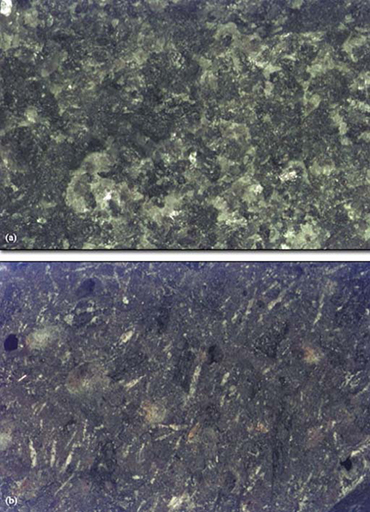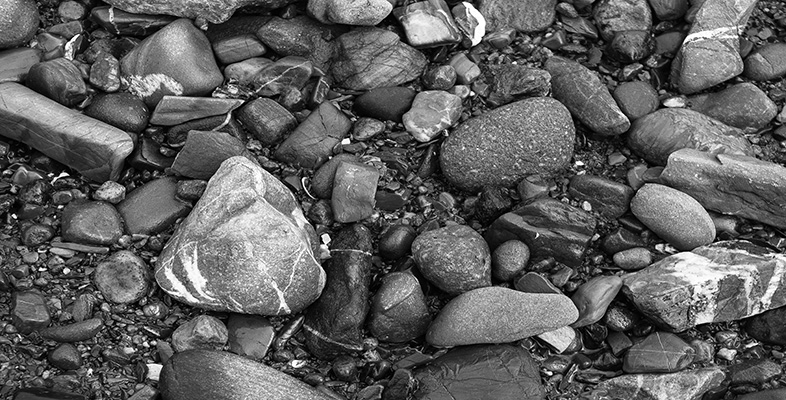1.3.3 Chemical and mineral composition of igneous rocks
As well as varying in grain size (owing to different cooling rates), igneous rocks also vary in chemical composition and hence in the identity and proportions of minerals present. For instance, the common igneous rock granite contains (as part of the strict geological definition of the term ‘granite’) between 10% and 35% by volume of the mineral quartz (chemical composition silicon dioxide – SiO2). On the other hand, the igneous rock gabbro (Figure 4a) does not usually contain any quartz. This difference is due simply to the fact that granite contains a much higher proportion of the element silicon (Si) than does gabbro. So, chemical composition determines which minerals are present, and cooling rate determines the crystal size of those minerals.

